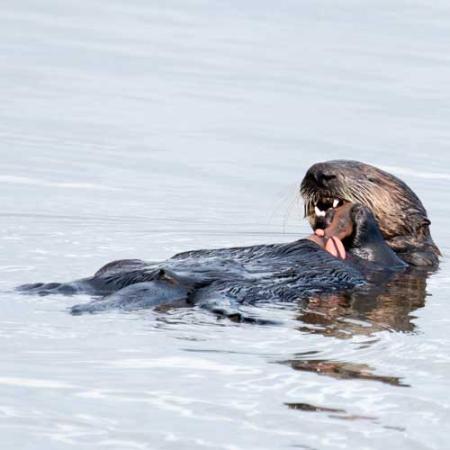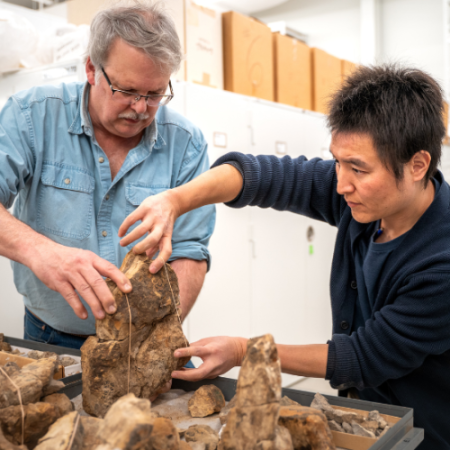This holotype specimen—the single physical example of a species—is part of the Burke Museum’s vertebrate paleontology collection. Visiting researcher Carlos Mauricio Peredo and colleagues from George Mason University in Virginia recently published their research, including naming the new species, in the Journal of Vertebrate Paleontology.
Carlos visited the Burke Museum in July 2016 to see the specimen when he was a recipient of the Museum’s Vertebrate Paleontology Collection Study Grant.
“When I first saw the fossil, I was amazed at how complete it was,” said Carlos. “The specimen includes not just a complete skull, but a complete vertebral column and parts of both flippers.”
“We are very fortunate to have such complete fossil; it provides a baseline for comparing other fossil dolphins,” said Carlos.
Traditionally, fossil dolphins from this time period have been called kentriodontids. However, many are known from only a handful of bones, making it difficult to properly compare one fossil species to another.
“Because Wimahl is such a complete specimen, it proved extremely useful in resolving the relationships amongst kentriodontids,” said Carlos. “This, in turn, helps us understand the origin of modern dolphins.”
The fossil dolphin is being 3D scanned to create a cast that will be on display in the new Burke Museum opening in fall 2019, with the holotype remaining available for study in the research collection.
---
Special thanks to Carlos Peredo for his contribution to this story.
See more fossils in the Burke Museum paleontology collection database or learn more about the vertebrate paleontology collection study grant.







